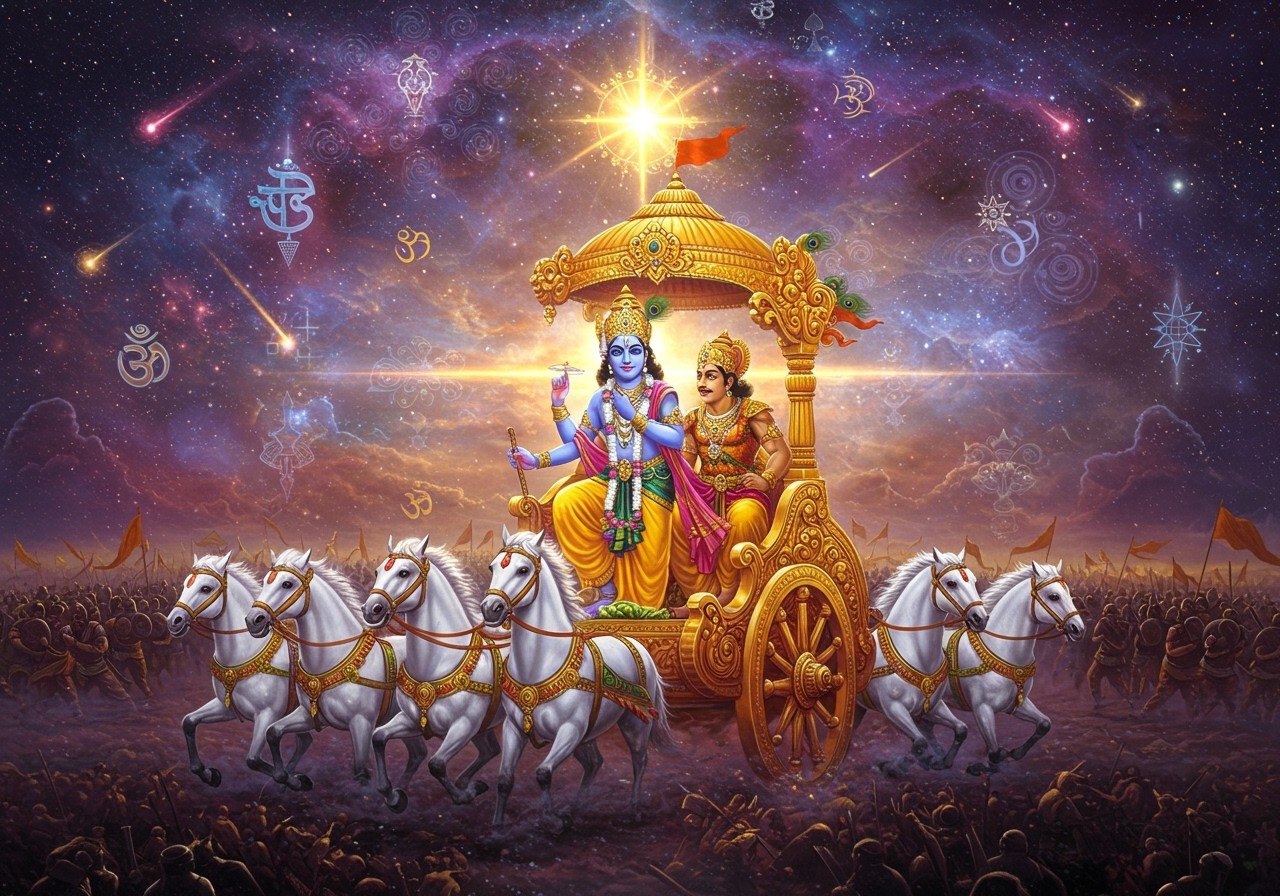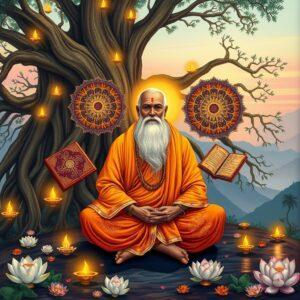
The Bhagavad Gita, a revered Hindu scripture, is a cornerstone of Indian philosophy and spirituality. Composed in the 1st or 2nd century CE, this 700-verse text, nestled within the epic Mahabharata (specifically chapters 23 to 40 of Book VI), unfolds as a dialogue between Prince Arjuna and his charioteer, Krishna, an avatar of Vishnu. This profound conversation explores Arjuna’s moral and philosophical dilemmas on the eve of the Kurukshetra War, offering timeless wisdom relevant even today.
The Gita’s Historical Context and Significance
Set against the backdrop of the Kurukshetra War, a symbolic clash between good and evil, the Gita captures Arjuna’s internal conflict as he questions the righteousness of fighting against his kin. Krishna’s divine guidance illuminates Arjuna’s path, unraveling the complexities of dharma (duty), karma (action and consequence), and bhakti (devotion).
The Gita’s influence on Indian history is undeniable. From ancient philosophers to contemporary thinkers, its teachings have sparked countless interpretations and commentaries, enriching the tapestry of Indian thought. Notable figures like Adi Shankaracharya and Swami Vivekananda have provided invaluable insights, shaping the understanding of the Gita for generations. The Gita’s wisdom extends beyond philosophical discourse, permeating spiritual practices, rituals, and even inspiring literary works like those of R.K. Narayan. Its enduring relevance continues to resonate with seekers of ethical and spiritual guidance worldwide.
Core Philosophical Concepts of the Bhagavad Gita
The Gita delves into profound philosophical concepts that offer a roadmap for navigating life’s complexities:
- Dharma (Duty): The Gita emphasizes the importance of fulfilling one’s duty without attachment to the outcomes. This principle encourages selfless action and dedication to one’s responsibilities.
- Karma (Action and Consequence): The Gita explains the law of karma, highlighting the interconnectedness of actions and their consequences. It encourages performing actions selflessly, without yearning for rewards.
- Bhakti (Devotion): Devotion to God is presented as a path to spiritual fulfillment. The Gita explores the power of bhakti in cultivating inner peace and connection with the divine.
- Different Yogas (Paths to Liberation): The Gita discusses various yogas, including Karma Yoga (path of action), Bhakti Yoga (path of devotion), and Jnana Yoga (path of knowledge), offering different avenues for spiritual growth.
- Selflessness and Detachment: The Gita advocates for detachment from material desires, emphasizing that true freedom lies in liberation from worldly attachments. This detachment paves the way for spiritual growth and self-realization.
Poojn.in supports your spiritual journey by offering a wide selection of items related to the Bhagavad Gita and Hindu worship:
- Sacred Texts and Interpretations: Explore a variety of Bhagavad Gita versions, including Sanskrit texts, translations, and commentaries by renowned scholars. Delve deeper into the scripture’s wisdom with insightful study guides and companion books. Connect with your inner self with our Hindu philosophy guide.
- Devotional Items for Krishna: Express your devotion to Krishna with beautifully crafted idols made from pure brass and copper. Enhance your puja rituals with traditional thalis, deepams, and diyas. Find exquisite Ladoo Gopal idols and other devotional items here.
The Gita’s Enduring Legacy
The Bhagavad Gita’s influence transcends time and culture. Its teachings on dharma, karma, and bhakti remain relevant in contemporary ethical debates and personal development practices. Its wisdom continues to inspire individuals worldwide, fostering introspection, inner peace, and a deeper understanding of the self.
From Arjuna’s dilemma to Krishna’s divine counsel, the Gita’s narrative serves as a timeless allegory for the internal struggles we all face. Its use of metaphors and symbolic language makes complex philosophical concepts accessible, offering practical guidance for navigating the challenges of life.
The Bhagavad Gita stands as a testament to the enduring power of Indian philosophy. Its teachings continue to shape spiritual practices, inspire literary and artistic expressions, and offer a path towards a more meaningful and fulfilling life. Embrace the wisdom of the Gita and embark on a journey of self-discovery and spiritual growth.
Explore the rich traditions of Bhajans and Kirtans: Bhajans and Kirtans: A Deep Dive into Rich Traditions.


